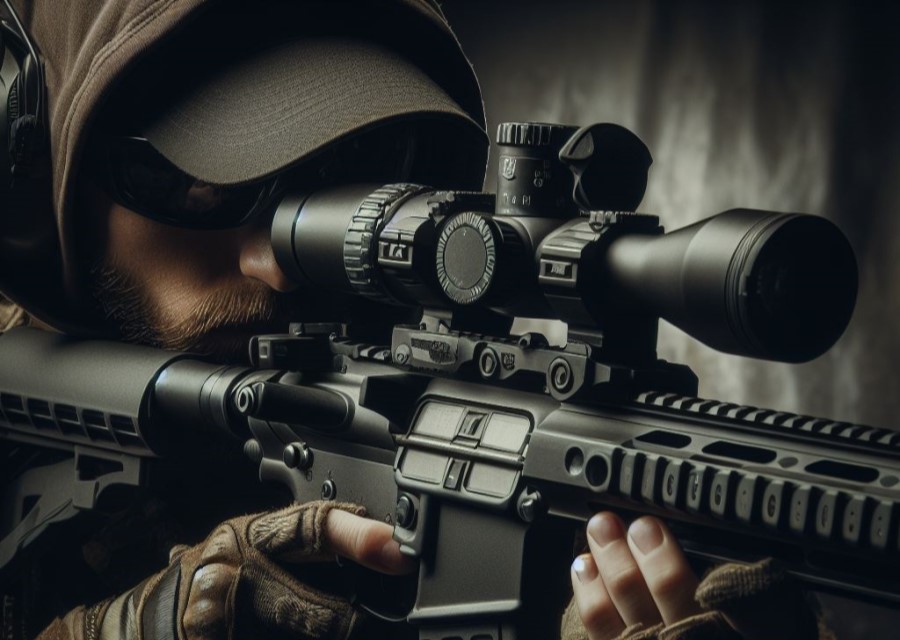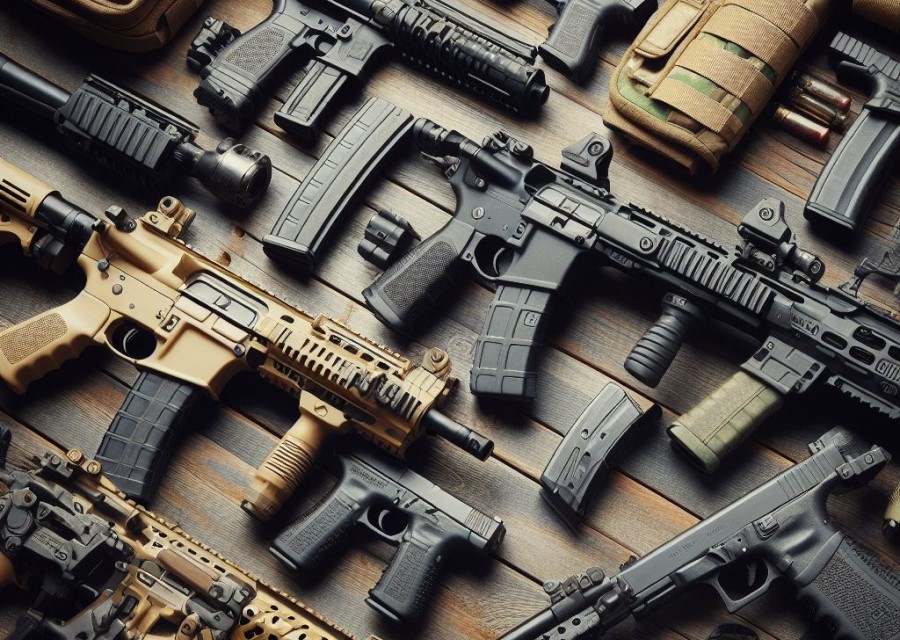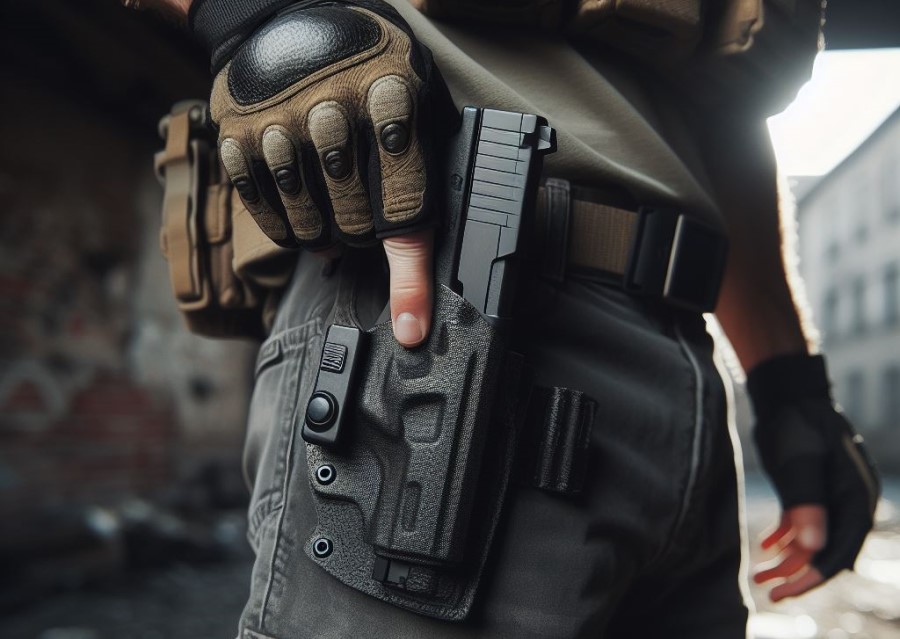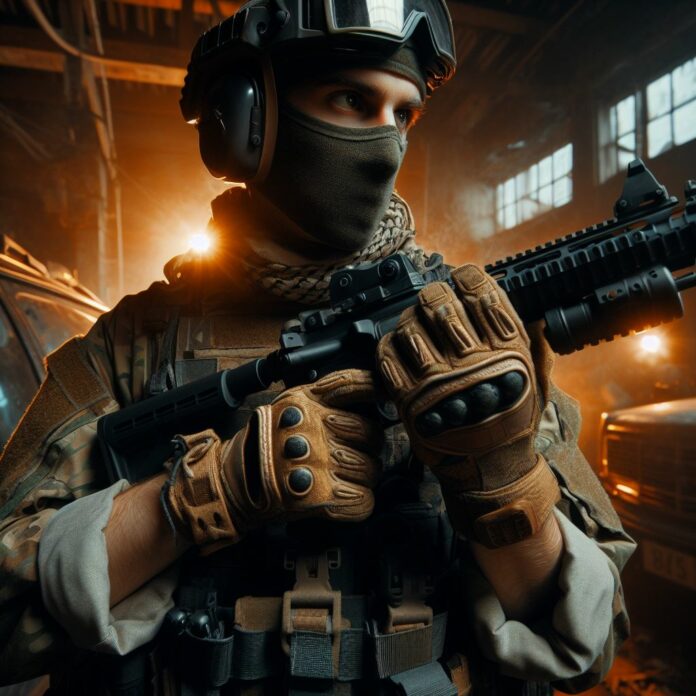Airsoft guns have gained popularity as recreational weapons for competitive gameplay and training. One crucial aspect of airsoft guns is the measurement of their velocity, commonly referred to as FPS (Feet Per Second). It helps determine the power and impact of the projectiles fired by these guns. Understanding the average FPS for airsoft guns is essential for players to ensure safety and adhere to regulations.
In this article, we will delve into the concept of FPS in the context of airsoft guns and explore the various factors that affect it. We will also discuss the different FPS limits and regulations imposed for different types of gameplay. we will highlight the importance of responsible FPS usage to ensure the well-being of players and the game environment.
To accurately measure FPS, different methods are employed, such as chronograph testing and relying on manufacturer FPS ratings. By gaining a comprehensive understanding of average FPS for airsoft guns and the associated safety considerations, players can engage in the sport responsibly and enjoy a safe and exhilarating gameplay experience.
What is FPS in the context of Airsoft Guns?

FPS, or feet per second, is a measurement used to determine the velocity of projectiles, including airsoft guns. In the context of airsoft guns, FPS refers to the speed at which the BBs are propelled from the gun’s barrel. It is an important factor to consider as it can impact the performance and accuracy of the gun.
Having a higher FPS generally means that the BBs will travel at a faster speed, resulting in a longer range and more force upon impact. However, it is crucial to note that different airsoft fields and events may have specific FPS limits for safety reasons. These limits are often set to ensure that players are not excessively injured when hit by BBs.
Therefore, when using an airsoft gun, it is important to be aware of the FPS limits set by the field or event organizers. This information can usually be found in the rulebook or guidelines provided. Adhering to these limits ensures a fair and safe playing environment for all participants.
Understanding what FPS means in the context of airsoft guns allows players to make informed decisions when choosing and using their equipment. By considering the FPS limits and regulations, players can enjoy the game while prioritizing safety for themselves and others.
Understanding FPS Limits and Regulations

Understanding FPS limits and regulations is crucial when participating in airsoft games. It is important to incorporate these keywords naturally into the text to maintain its integrity. Most fields and events have established specific limits for the FPS (feet per second) of airsoft guns to ensure safety and fairness.
It is essential to comprehend these limits and regulations to avoid any mishaps during gameplay. These limits typically range from 300 FPS to 400 FPS, but it is important to note that there may be certain restrictions for different types of guns and game scenarios.
To ensure compliance with regulations, players should regularly check and adjust their gun’s FPS to meet the designated limit. This can be accomplished by using a chronograph to measure velocity accurately.
It is also necessary to familiarize yourself with any additional regulations that may be in place, such as minimum engagement distances or restrictions on certain gun upgrades.
Following FPS limits and regulations not only helps prevent accidents and injuries during gameplay but also ensures that all players have a level playing field and can enjoy the sport safely. To stay within FPS limits and comply with regulations, consider the following suggestions:
1. Regularly check and adjust your gun’s FPS to meet the specified limit.
2. Use an appropriate airsoft gun for the game scenario to avoid surpassing FPS restrictions.
3. Familiarize yourself with any additional regulations, such as engagement distances and equipment restrictions.
4. Educate yourself about safety protocols and proper handling of airsoft guns to minimize the risk of accidents.
By understanding FPS limits and regulations and following these guidelines, airsoft players can have a safe and enjoyable experience on the field.
What are the Different FPS Categories for Airsoft Guns?
The different FPS categories for airsoft guns are as follows:
- Low FPS: Airsoft guns with a low FPS typically have a velocity range of 200-300 feet per second. These guns are mainly used for close-quarters combat and indoor gameplay. They offer reduced range and accuracy but are suitable for beginners and casual players.
- Medium FPS: Airsoft guns with a medium FPS usually have a velocity range of 300-400 feet per second. These guns offer a balance between range, accuracy, and safety. They are commonly used in outdoor games and provide a good compromise for players looking for versatility.
- High FPS: Airsoft guns with a high FPS generally have a velocity range of 400-500 feet per second. These guns are suitable for experienced players and those engaging in long-range engagements. They offer increased range and accuracy but may have stricter safety considerations and restrictions in gameplay.
- Extreme FPS: Airsoft guns with an extreme FPS have a velocity range of 500 feet per second or above. These guns are typically used in specialized fields or scenarios that require long-range engagements or specific gameplay styles. They require careful handling and may have additional safety regulations in place to ensure responsible usage.
The different FPS categories provide players with options to suit their gameplay preferences and skill levels. It is essential to follow safety regulations and game rules regarding FPS limits to ensure a safe and enjoyable airsoft experience.
What are the FPS Limits for Different Types of Gameplay?
The FPS limits for different types of gameplay in airsoft are essential to ensure safety and fair play. Here is a table outlining the FPS limits for various gameplay scenarios:
CQB (Close Quarters Battle): 350-400
FPS Outdoor Field: 400-450 FPS
DMR (Designated Marksman Rifle): 450-500
FPS Sniper: 500-600 FPS
These limits are typically set by the field or event organizers and are based on the distance and gameplay requirements. It is important for players to adhere to these limits to prevent injury and maintain a safe environment.
Enforcement of FPS limits is commonly done through chronograph testing, which measures the velocity of the BBs fired from the airsoft guns. Failure to comply with the established FPS limits may result in disqualification or restrictions on gameplay.
It is crucial for players to understand and follow these limits to ensure a fun and safe airsoft experience.
Factors Affecting FPS in Airsoft Guns

When it comes to airsoft guns, understanding the factors that affect FPS is crucial. In this section, we’ll dive into the key elements that determine how fast those BBs soar through the air.
From exploring different types of propellants to the importance of barrel length and bore diameter, we’ll uncover the secrets behind maximizing FPS.
Additionally, we’ll touch on the impact of hop-up adjustment and air compression, shedding light on the intricate workings of these essential components.
Get ready to level up your airsoft game with a deeper understanding of what influences FPS.
Type of Propellant
Green Gas
A type of propellant that uses a mixture of propane and silicone oil. It is stored in a canister and is commonly used in gas-powered airsoft guns.
CO2 Cartridges
A type of propellant that uses compressed carbon dioxide gas. It is stored in small cartridges and is often used in gas-powered pistols and some rifles.
HPA (High-Pressure Air)
A type of propellant that uses compressed air stored in a tank. It requires a separate air rig and is commonly used in airsoft guns with custom HPA systems.
Spring
A mechanical propellant that uses a spring mechanism to generate power. It requires manual cocking or charging before each shot and is commonly found in spring-powered airsoft guns.
Pro-tip:
When choosing the type of propellant for your airsoft gun, consider factors such as convenience, performance, and cost.
Gas-powered guns offer realistic blowback action, but may require more frequent refills. CO2 guns provide consistent power but may be more expensive to operate. HPA guns offer adjustable power and consistent performance, but require additional equipment.
Spring guns are simple and reliable but have a lower rate of fire. Choose the type that best suits your playing style and preferences.
Barrel Length and Bore Diameter
The barrel length and bore diameter are crucial factors that can impact the FPS (Feet Per Second) of airsoft guns. In general, a longer barrel length can increase the FPS, while a shorter barrel length can decrease it. This occurs because a longer barrel allows for more BB acceleration before it exits the gun, resulting in higher FPS.
On the other hand, the bore diameter of the barrel has minimal impact on FPS. Although a narrower bore diameter might slightly boost FPS by enhancing air compression, the difference is usually insignificant.
It’s important to recognize that barrel length and bore diameter are not the sole determining factors of FPS. Other aspects like the type of propellant, hop-up adjustment, and air compression can also influence FPS.
When selecting an airsoft gun, it is essential to consider your gameplay style and preferences. A longer barrel may be advantageous for long-range accuracy, but it can also limit maneuverability. Conversely, a shorter barrel can enhance maneuverability, but it may sacrifice some range.
Hop-up Adjustment
When it comes to airsoft guns, hop-up adjustment plays a crucial role in determining the performance and accuracy of the shots fired. Hop-up adjustment allows you to optimize the backspin on the BB, increasing range and improving shot precision. Here are the steps to properly adjust your hop-up:
- To begin, locate the hop-up adjustment dial on your airsoft gun. This dial is typically found near the barrel or inside the ejection port.
- Carefully turn the hop-up adjustment dial clockwise to increase the hop, giving the BB more backspin. This increase in backspin will help the BB rise and extend its range.
- If you need to decrease the hop, turn the hop-up adjustment dial counterclockwise. This reduces backspin, creating a flatter trajectory for shorter distances.
- To find the optimal setting, it’s important to test the hop-up adjustment by firing a few shots at a target. Keep adjusting until you achieve the desired accuracy and range.
Keep in mind that hop-up settings may vary for each airsoft gun due to factors like barrel length and BB weight. Experimentation and fine-tuning are crucial to finding the perfect hop-up adjustment for your specific gun and shooting conditions.
Remember, hop-up adjustment is the key to maximizing your airsoft gun’s performance, so take the time to master it!
Air Compression
Air compression is an essential aspect of airsoft guns that greatly influences their FPS velocity (feet per second). To comprehensively understand air compression, the following key points should be noted:
- Air compression plays a vital role in propelling the BB out of the airsoft gun.
- When the trigger is pulled, air compression takes place as air is released from the pressure chamber.
- An airtight seal between the piston head and cylinder is crucial for achieving optimal air compression.
- If there are any leaks or gaps in the air compression system, the FPS will be negatively affected.
- To ensure proper air compression, regular maintenance and lubrication of the piston, cylinder, and other components are crucial.
- Enhancing air compression and improving FPS performance is possible through modifications such as upgrading the air nozzle or piston head.
- The quality of air compression directly impacts shot placement consistency and accuracy.
- It is recommended to use a chronograph to test air compression and assess FPS performance to ensure consistency.
To maximize performance and achieve the desired FPS levels, players must have a solid understanding of air compression and its role in airsoft guns. Maintaining a reliable and efficient air compression system will contribute to an enjoyable and effective airsoft gameplay experience.
The Importance of Safe and Responsible FPS

It is imperative to comprehend the significance of safe and responsible FPS when discussing airsoft guns. Upholding a safe and suitable FPS (feet per second) is vital to guarantee the well-being of all participants and minimize the risk of injuries.
Elevated FPS values can lead to excessive velocity, amplifying the potential harm caused by airsoft projectiles. Conversely, low FPS may impede the effectiveness and accuracy of the gun.
It is advised to adhere to the maximum FPS limits stipulated by the field or event regulations to ensure a safe and enjoyable experience for all involved.
By adhering to these guidelines, players can foster a culture of responsible gun handling and prioritize safety above all else.
Remember, in the realm of airsoft, the importance of safe and responsible FPS cannot be emphasized enough.
What are the Safety Considerations with Higher FPS?
Higher FPS (feet per second) in airsoft guns can pose certain safety considerations that players must be aware of.
- Increased Impact: With higher FPS, the velocity at which the BBs are fired increases, leading to a stronger impact upon hitting a target. This can result in more significant bruising or pain, especially when shots are fired at close range.
- Risk of Injury: Higher FPS can potentially increase the risk of injury, particularly when aiming for sensitive parts of the body, such as the eyes or unprotected skin. It is crucial to wear appropriate protective gear, including goggles or face masks, to mitigate the risk.
- Distance Control: Airsoft guns with higher FPS have a more extended effective range, making it more challenging to control shots within a safe engagement distance. Players must be mindful of their surroundings and ensure that shots are taken at a safe distance from other players.
- Field Regulations: Many airsoft fields and events have specific FPS limits in place to prioritize the safety of participants. It is essential to adhere to these limits and verify that your airsoft gun meets the regulations before participating in any games or events.
- Safety Measures: To prevent accidents and injuries, it is crucial to handle airsoft guns with higher FPS responsibly. Always keep the gun pointed in a safe direction, treat it as if it were loaded at all times, and never aim at anyone who is not actively playing.
By considering these safety considerations when using airsoft guns with higher FPS, players can enjoy the sport responsibly while prioritizing their safety and the safety of others.
Methods to Measure FPS in Airsoft Guns
Curious about measuring the FPS in airsoft guns? In this section, we’ll dive into two methods used for this purpose: chronograph testing and manufacturer FPS ratings.
Get ready to explore how these techniques shed light on the velocity and power of airsoft guns. From hands-on measurements to manufacturer specifications, we’ll uncover the ins and outs of FPS measurement in the world of airsoft.
So, let’s equip ourselves with knowledge and discover the facts behind the numbers!
Chronograph Testing
When performing chronograph testing, it is crucial to ensure the testing environment remains consistent and controlled. This includes considering factors such as ambient temperature, BB weight, hop-up adjustment, and propellant type.
By adhering to standardized testing procedures, players and event organizers can guarantee a fair and secure gaming experience.
To conduct chronograph testing, the airsoft gun is fired multiple times over the chronograph device, and the average FPS is calculated. This data can then be compared to the FPS limits set for the specific game or event. In case the gun exceeds the FPS limit, measures such as adjusting the hop-up or using a different propellant can be employed to bring it within the acceptable range.
Ensuring safety and responsibility regarding FPS limits is of utmost importance. Higher FPS can escalate the risk of injuries and must be managed with care. Players should always comply with the rules and regulations established by event organizers to maintain a safe and enjoyable airsoft experience.
By conducting proper chronograph testing, players can ensure that their airsoft guns fall within the designated FPS limits, thereby promoting fair gameplay and creating a safer environment for all participants.
Manufacturer FPS Ratings
Manufacturer FPS ratings are incredibly important within the airsoft community as they give players valuable information about the velocity of their guns. It is worth noting that these ratings can vary depending on the brand and model of the airsoft gun.
When examining manufacturer FPS ratings, it is crucial to consider the specific requirements and regulations of the game or event in which you will be participating. Some game organizers establish specific limits on FPS to ensure fair and safe gameplay.
It is vital to check the manufacturer FPS ratings before purchasing an airsoft gun to ensure it meets your gaming needs and complies with the rules of the games you plan to participate in. Always prioritize safety and adhere to established guidelines to promote an enjoyable and responsible airsoft experience.
Frequently Asked Questions
What is the average FPS for airsoft guns?
The average FPS for airsoft guns ranges between 350-400 FPS. However, this can vary depending on factors such as the type of field and style of play. Outdoor fields generally have higher FPS limits, while indoor fields have lower limits for safety reasons.
What are the recommended FPS limits for indoor and outdoor airsoft fields?
For indoor fields, the FPS limit usually ranges around 300 FPS for sidearms and 330-360 FPS for main replicas. Outdoor fields have higher FPS limits, typically between 366-420 for most replicas, 420-450 for designated marksman rifles (DMRs), and 480-550 for sniper rifles.
Can I adjust the FPS of my airsoft gun?
Yes, it is possible to adjust the FPS of your airsoft gun. If you need to decrease the FPS, methods like spring grinding, spring replacement, cutting the spring, or using smaller/heavier BBs can be employed. On the other hand, if you want to increase the FPS, you can change the spring or replace the inner barrel. However, it’s essential to consult a professional or follow field rules and regulations to ensure safe and fair play.
What are some good gun brands for future upgrades?
When it comes to airsoft gun brands, some popular choices known for their upgrade potential include Tokyo Marui, G&G Armament, Classic Army, VFC, and KWA. These brands offer a wide range of M4/M16 style guns, M14s, and other models suitable for customization and transforming into designated marksman rifles (DMRs).
How does FPS affect airsoft play and performance?
FPS (Feet per Second) affects the power, range, and accuracy of an airsoft gun. Higher FPS generally means more power behind each shot, increased range before gravity affects the BB’s trajectory, and potentially better accuracy. However, it’s crucial to find the “sweet spot” FPS that suits the field rules, style of play, and external factors for a safe and fair gaming experience.
Can airsoft guns cause damage to the skin?
Yes, airsoft guns can cause damage to the skin, especially at close range or with higher FPS settings. It is recommended to follow cautionary measures such as wearing appropriate protective gear, including layers of clothing, to mitigate the potential pain and prevent skin damage.

